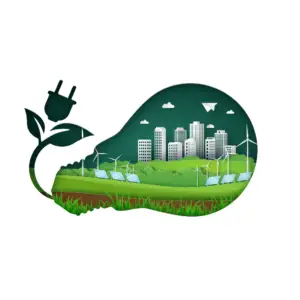
The UN’s IPCC underscored imperative actions to be instituted in the next ten years, stressing the transition to Green Jobs and a green economy as critical to safeguarding future generational livability.
The Pivotal Role of Green Jobs:
Green Skills Development: The market for Green Jobs witnessed a 12.3% surge in green talents from 2022 to 2023. Despite this, the job postings mandating green skills saw a steeper climb of 22.4%. However, a mismatch persists, with only one in eight workers equipped with green skills.
Renewable Energy Sector and Green Jobs:
Employment in the domain of Green Jobs within renewable energy is on an upward trajectory, with an addition of 120 workers for every 100 who vacate, reinforcing the sector’s expansion and the vital role of Green Jobs. The oil and gas sector noted a 21% accumulation of green talent in 2023.
Green Skills in Automotive and Finance Industry:
The automotive industry is increasingly seeking professionals with Green Jobs in the EV sector, with countries like Sweden, the UK, and Germany at the forefront. Contrastingly, the US trails with a mere 3.7% of auto workers possessing EV skills. In finance, the presence of green skills is lower, with a concentration of 6.8%. Singapore dominates globally in this area.
Accelerating Green Jobs Growth in the US:
The US witnessed substantial growth in the acquisition of green skills and Green Jobs from 2021 to 2022, notably in areas like carbon credits (157%) and emissions trading (75%).
Hiring Trends in Green Jobs:
Employers are progressively opting for candidates lacking prior green experience for Green Jobs, focusing on core competencies like business strategy and project management.
Global Green Jobs Scenario:
A global shift towards Green Jobs and a green economy is noticeable. European nations are more inclined towards renewable energy-based Green Jobs, while countries like Saudi Arabia and Indonesia remain anchored in fossil fuel-centric industries.
Solutions for Green Jobs Disparity:
Addressing the growing gap between demand and supply in Green Jobs necessitates extensive investments in workforce and green skills development programs. A multi-stakeholder approach involving governments, businesses, and education institutions is pivotal for fostering Green Jobs and green skills development. Employers and policymakers should focus on identifying gateway jobs to Green Jobs, supporting worker transitions, and implementing rigorous upskilling programs.
LinkedIn’s Contribution to Green Jobs:
LinkedIn is leveraging user data to spur green skills and Green Jobs development globally. It aims to partner with diverse industry stalwarts and entities to devise effective strategies and pinpoint successes and deficiencies in green skills and Green Jobs acquisition.
Objective:
The ultimate goal is to expedite the transition to a green economy, bolster sustainability, combat climate change, and guarantee equitable access to economic prospects via international collaboration and a dedicated approach to nurturing green skills and Green Jobs.
Conclusion:
Enhancements in green job opportunities, public transportation advances, sustainable production innovations, and comprehensive reskilling are quintessential components for a sustainable future. This article provides an extensive overview of the current global landscape of Green Jobs and green skills, highlighting the urgent need for a collaborative approach to navigate the challenges and realize the opportunities in the transition to a green economy




